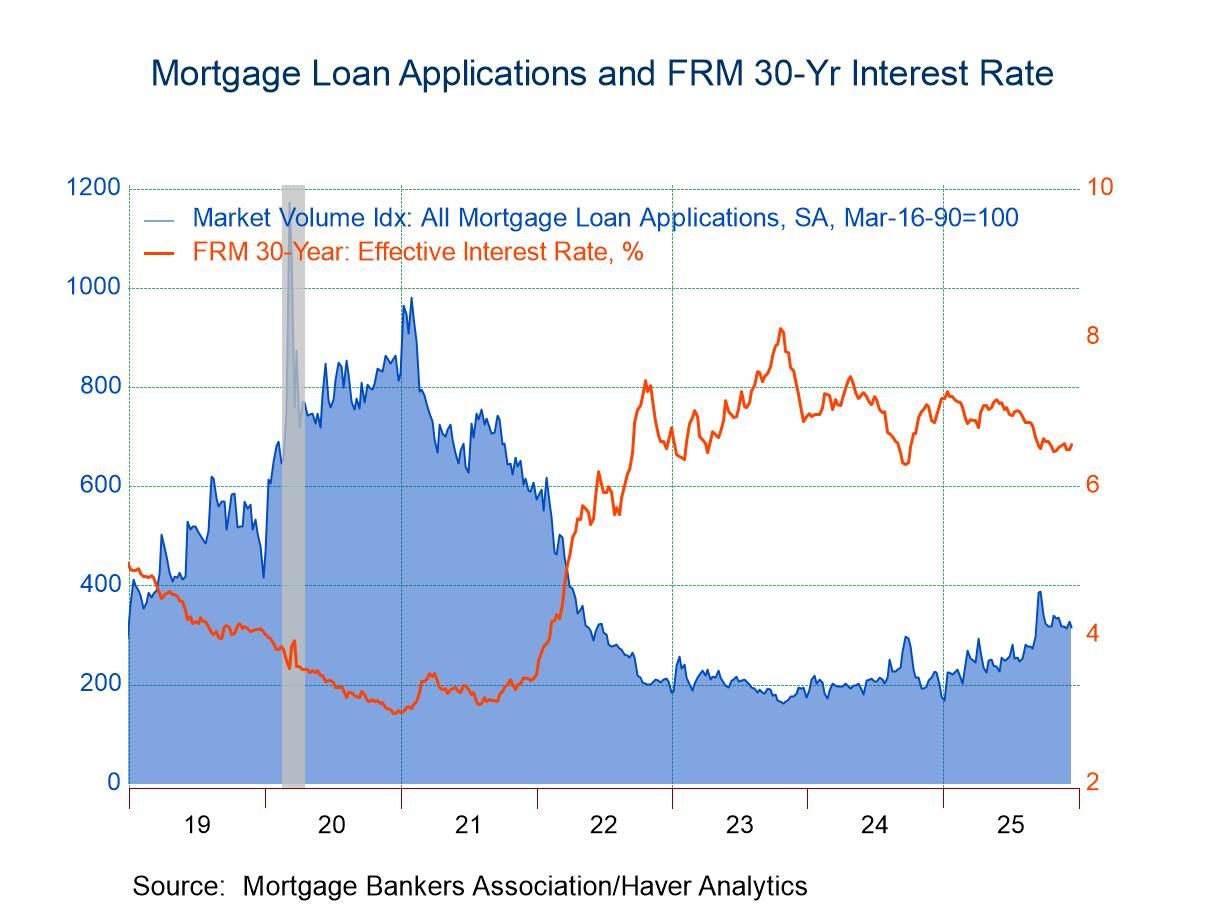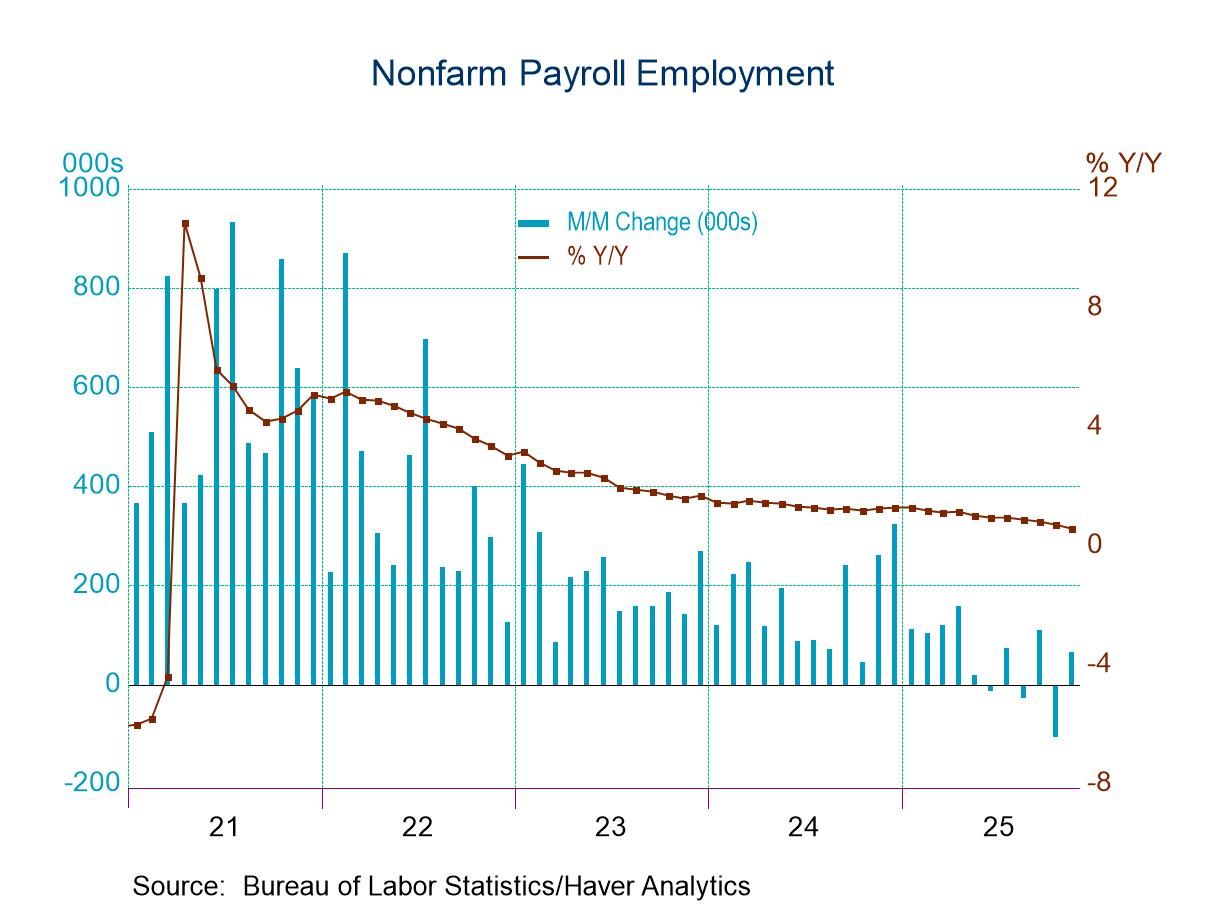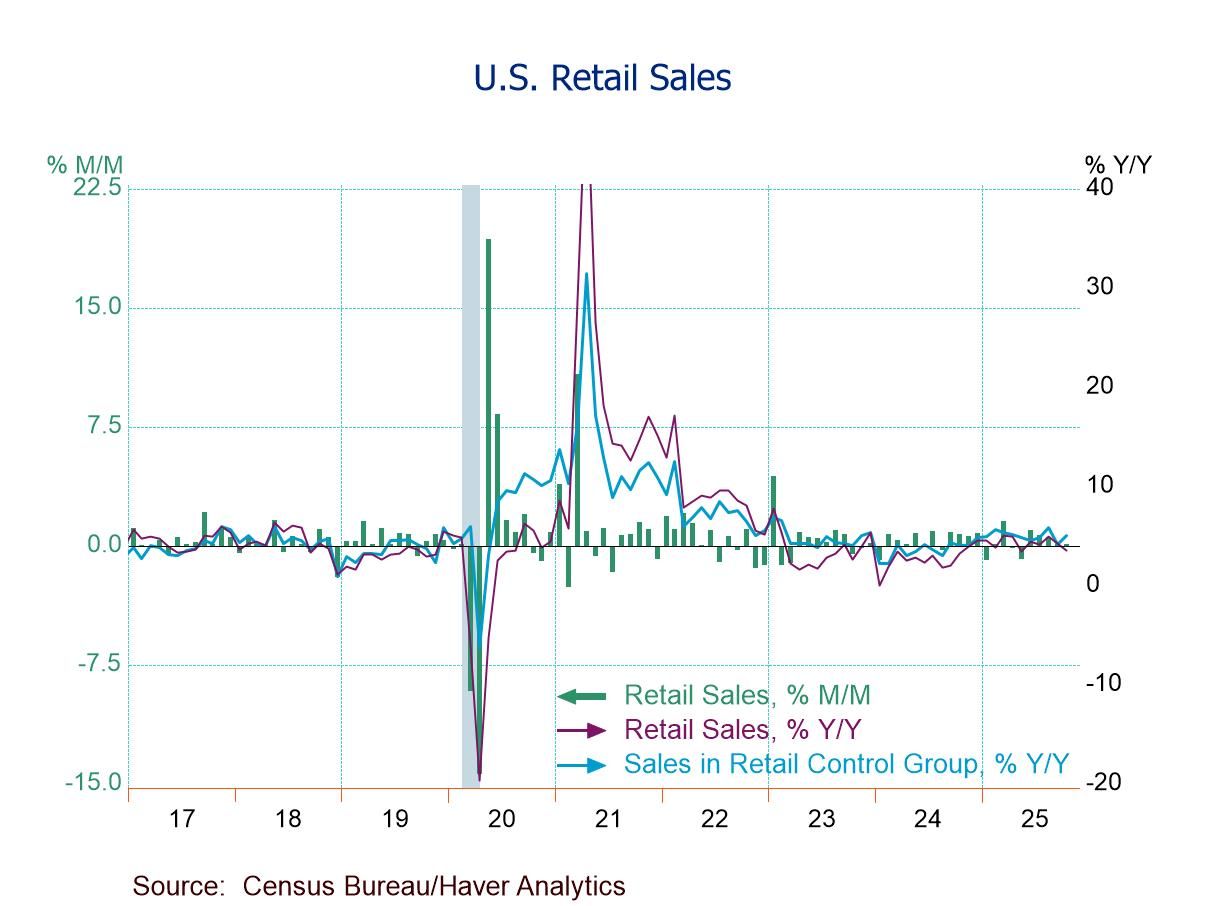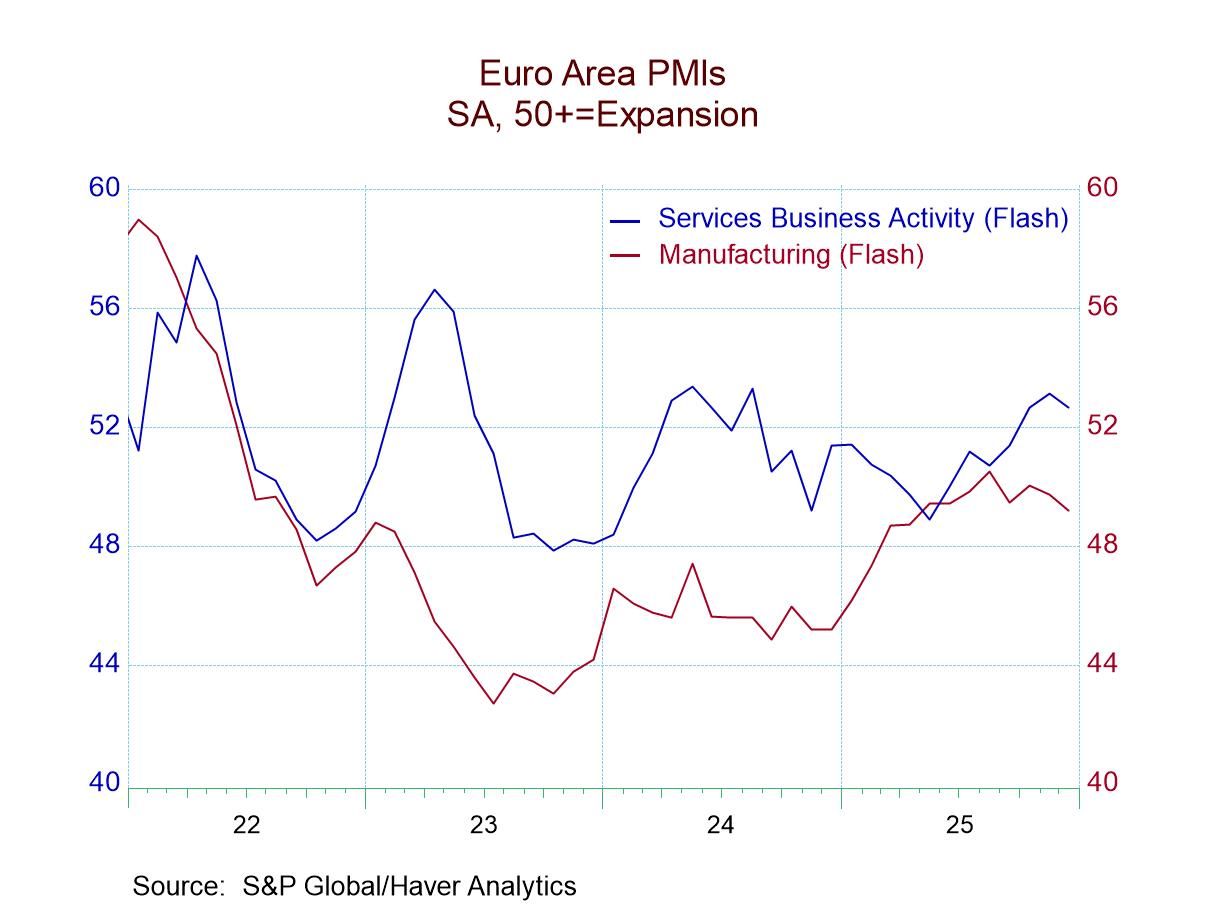 Global| Jan 06 2021
Global| Jan 06 2021Composite PMIs Remain Weak But Mostly Improve Modestly; A Very Different Story from the Composite PMIs
Summary
Service sectors struggle In sharp contrast to the ebullient manufacturing PMIs released yesterday, the services sector readings are weak globally driving the composite PMI measures to extremely weak readings. The average queue [...]
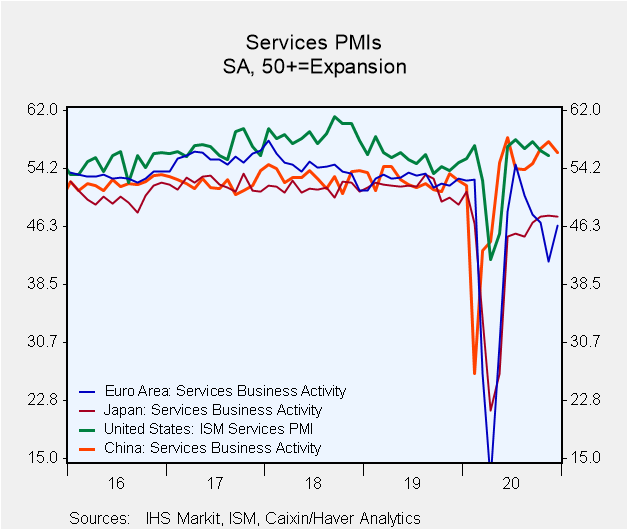 Service sectors struggle
Service sectors struggle
In sharp contrast to the ebullient manufacturing PMIs released yesterday, the services sector readings are weak globally driving the composite PMI measures to extremely weak readings. The average queue standing for the PMIs in December is 35.2%, close to the bottom third of the historically-ranked, pooled, data back to January 2016. These are poor readings and stand in marked contrast to the manufacturing sector readings and standings.
Strength is hard to find in this report there is a 90th percentile decile standing for China and India. Australia, the U.S. and Saudi Arabia have standings in their respective 80th decile percentiles. After that, Zambia has a standing in its 50th percentile range near the top, nearly to the 60th percentile level. But after Zambia, the next highest PMI standing is 41.1% in Egypt, then 37.5% in Kenya.
The EMU as a weighted whole has a 10.7 percentile standing. Japan is at a 17.9 percentile…and so on. It’s a very weak slate of numbers since Covid-19 hits face-to-face businesses so hard it creams the services sector. Not only are services sector firms disproportionately hurt, but they are coming back on stream very slowly. They also have a disproportionate hit of outright businesses closed and shut that will not return.
As with the manufacturing data released earlier, these are data through December. Yet, January is going to prove to be even crueler. The U.K. has made its lockdown parameters the law of the land. In my manufacturing PMI report issued yesterday, I referred to conditions globally, flagging Japan that is pondering more action and also, the U.S. The City of Los Angeles has its back to the wall and is rationing oxygen. One wonders what the knock-on effects are for non-Covid-19 patients who have been steady users of oxygen in Los Angeles. As bad as the economic numbers are, they are likely to worsen in January, based on the current deteriorating conditions on the ground.
At the bottom of the table, I present some totals since the trouble in analyzing early data like this is that there are no aggregates to serve as an overview or bellwether, no single measure that tells the story. The totaling process in the table is meant to bridge that gap. It shows that from October to November to December, the number of composite PMIs with readings below 50 has not risen. It has eroded slightly from a total of eleven in October and November to nine in December. The number of reporting entities slowing month-to-month is at seven in December, down from twelve in November, and at the same total as in October. I also strike an unweighted total ‘PMI’ for the U.S., the U.K., the EMU and Japan and that set of data shows a relatively stable reading from October to December.
The averaged sequential data over three months six months and 12 months show the worst and weakest results for the 12-month average. On that horizon, all reporting units weaken and only two have readings above 50 (China and Saudi Arabia). Over six months there is the pick-up compared to the first half Covid-19 crisis and all reporting economic units show improvement in their respective six-month averages compared to their respective 12-month averages. Seven remain below the diffusion value of 50. Over three months trends get murkier as 10 of the 21 reporters show a slowing compared to six-months and 10 also log readings below their respective 50% mark.
The services sector gets the larger weight in the composite and the services sector is also the sector that dominates the employment picture. Getting services back on its feet is the major challenge of the recovery process and for that to happen, the vaccines are going to have to be widely implemented. The health experts seem somewhat divided on what percentage of the populations needs to be inoculated for herd immunity to hold. But as that proportion rises, the spreading of the virus should slow and eventually be thwarted as the herd immunity mark is attained. Still, there is too little known about the properties of the vaccines because they were rushed into service and no one has been able to test any of their longer run properties. With the new spreading of the virus, there is even more emphasis placed on the vaccines and a reinspection of whether the two-shot protocol is necessary for Moderna as well as the Pfizer vaccines. This is an attempt to make the existing supply of the vaccines go further faster. There is a sense of urgency here.
Once again we are confronted with a future to be determined by (1) the spread of the virus, (2) the efficacy of the vaccines, and (3) the speed for the administration/delivery process. The early returns show vaccine distribution being slowed by attempts to cling to protocols and by people even in favored recipient groups reluctant to take the vaccine. This is a problem. Chile, for example, is considering making it a legal mandate to get vaccinated. All this suggests that the roll out and administration of the vaccine is going to face practical limits regardless of planning and best efforts.
Robert Brusca
AuthorMore in Author Profile »Robert A. Brusca is Chief Economist of Fact and Opinion Economics, a consulting firm he founded in Manhattan. He has been an economist on Wall Street for over 25 years. He has visited central banking and large institutional clients in over 30 countries in his career as an economist. Mr. Brusca was a Divisional Research Chief at the Federal Reserve Bank of NY (Chief of the International Financial markets Division), a Fed Watcher at Irving Trust and Chief Economist at Nikko Securities International. He is widely quoted and appears in various media. Mr. Brusca holds an MA and Ph.D. in economics from Michigan State University and a BA in Economics from the University of Michigan. His research pursues his strong interests in non aligned policy economics as well as international economics. FAO Economics’ research targets investors to assist them in making better investment decisions in stocks, bonds and in a variety of international assets. The company does not manage money and has no conflicts in giving economic advice.



